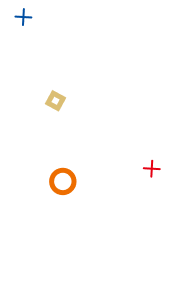
Useful Resources for Students
Resources in HKSYU
Useful Resources for Teachers
Procedures of Handling Suspected Case
01
Identify suspected case
The University has authorized the use of Veriguide to detect plagiarism for text-based written assignments. Course instructors must inform students of this in introductory courses, course outlines, and informational material provided to them. After students have submitted the assignments and projects, the course instructor should examine the text-matching report from Veriguide to determine the extent and significance of any suspected plagiarism or academic misconduct.
02
Assessment and Investigation
Where there is a suspected case, the course instructor should assess the seriousness of the case, and refer all serious cases to the Head of Department (HoD) and/or Programme Director (PD) for further action. The criteria to determine the seriousness of the suspected plagiarism and/or academic misconduct includes:
For a serious offence, after examining the case materials, course instructor and HoD/Programme Director should organize a formal investigation meeting to provide the student(s) with an opportunity to respond and answer questions regarding the suspected academic misconduct.
- Experience of the student
- Disciplinary record of the student
- Nature of plagiarism and/or academic misconduct
- Weighting and importance of the assessment task
- Extent of plagiarism
- Intent of student
For a serious offence, after examining the case materials, course instructor and HoD/Programme Director should organize a formal investigation meeting to provide the student(s) with an opportunity to respond and answer questions regarding the suspected academic misconduct.
03
Decision and Penalty
After consideration of all of the evidence after the meeting, the personnel involved (depends on level of academic misconduct) will determine whether:
- The case is dismissed, with no action;
- There is a minor breach of academic misconduct and the course instructor can impose appropriate penalty to the student.
- The case should be referred to Board of Examiners and/or Student Disciplinary Committee for consideration under the disciplinary regulations.
| Level of academic misconduct | Punishment |
|---|---|
| Low to medium level: First offense or minor offense such as improper acknowledgement of the use of others’ work, undeclared multiple submissions, self-plagiarism. |
|
| Medium to high level: Repeated offense or serious offense such as using unauthorized material, impersonation during quiz/ examination, engaging in contract cheating |
|
04
Communication the decision
The course instructor and/or HoD/PD will communicate the outcome to the candidate after the decision has been made.
05
Acceptance or Appeal
The student will be advised of any determination made and has a right of appeal against a finding of academic misconduct or any penalty imposed. Where a finding of academic misconduct is upheld on appeal, the penalty can be varied at the discretion of the individual or body conducting the appeal.
06
Filing the Case
After each case is closed, the course instructor shall report the case, together with its decision, to the Department, irrespective of whether the student concerned is found guilty or not.
↑

